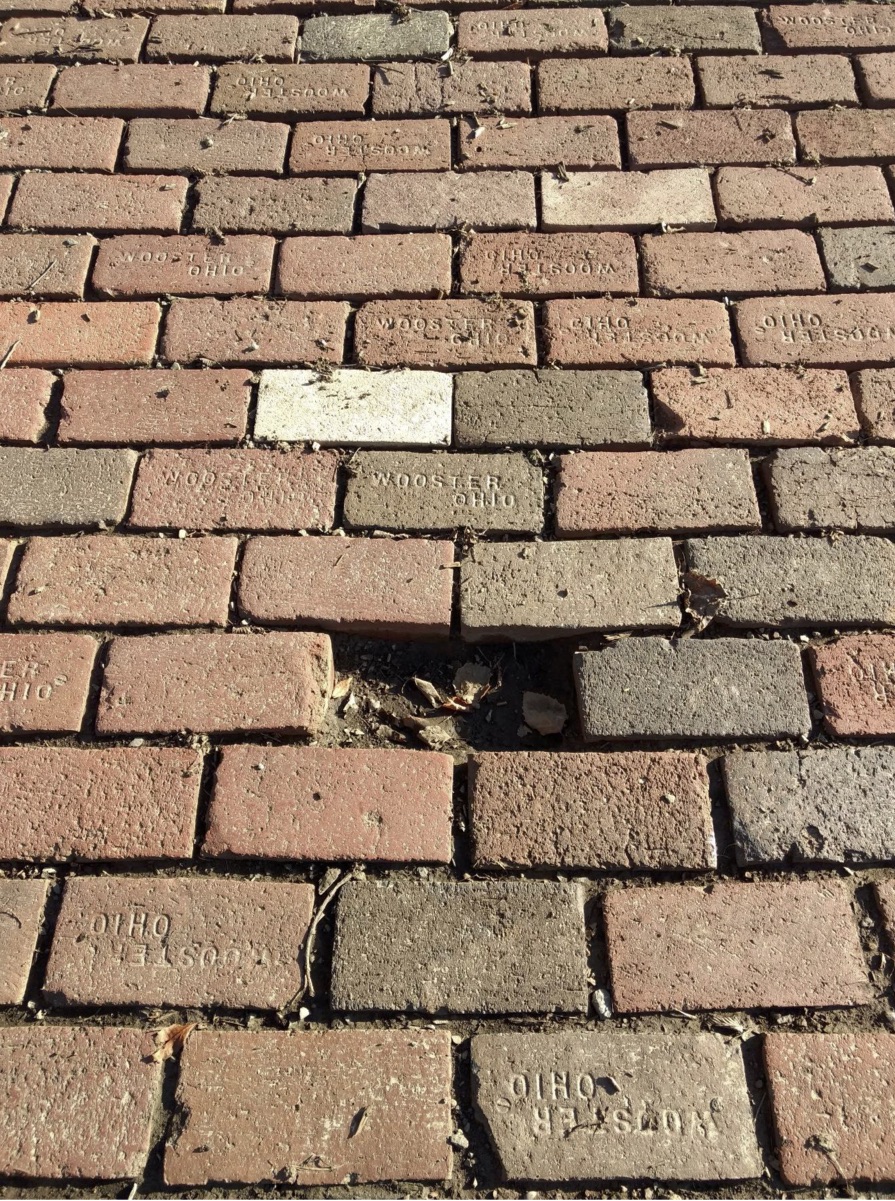Wooster, OH – The first installment of student photos from Earth Materials gave a personalized perspective on materials in our lives. The second installment looks at the built environment around us.

Devin Henson’s (’21) image shows a beloved Wooster tradition.
Devin writes:
My entry examines how Earth materials are used in the physical infrastructure of the College of Wooster campus and form a part of community tradition, as well as the consequences of this tradition. Multiple footpaths on campus are made of local red bricks, many of which are labeled either “Wooster Ohio” or “Wooster Paver.” These bricks are made of sand and clay and were fired at a high temperature during production. Sand and clay are sedimentary particles of different grain sizes. Sand refers to sedimentary particles with a grain size of 0.0625-2.0 mm, while clay refers to sedimentary particles with a grain size of less than 0.0039 mm. Wooster was the location of a brick company because of its high-quality clay. The hydrous aluminum silicates in this clay produce strong bricks and are thus optimal for the brickmaking process.
It is customary for graduating seniors to dig up and take one of the bricks on campus after completing their Independent Study. Part of the tradition, at least in the way it was passed down to me, is that it is unlucky to take a brick before submitting IS. In addition, the taking of the brick is supposed to happen at night (given that it is technically considered the theft of College property). That last point brings up an important factor in both this tradition and the Earth sciences – sustainability. The company that produced the labeled bricks no longer exists. As such, when the labeled bricks are removed, they are replaced with modern unlabeled ones. Eventually, there will be no labeled bricks left on campus, and the tradition will be forced to change (or will end entirely). In this way, we can see that the removal of Wooster bricks is a microcosm for other issues surrounding Earth materials. Tradition is a powerful force, and it can often lead us to engage in practices that are unsustainable because we value short term gain over long term consequences.

Richard Torres’ (’23) image captures a local landmark.
Richard writes:
King Philip’s Mill (pictured) is one of the many mills in Fall River made of Fall River Granite. Fall River granite comes from the Fall River Batholith which was easiest to mine at the higher parts of the city and because of the dangers of transporting stone downhill most mills along the water front were made of bricks[1]. Most mills are made of brick, but granite was readily available and cheaper to use and was much harder than other granites[2]. The factories would sometimes get the granite from where they where building, this made large basements. Fall River granite looks grey from far away but close up it looks pink due to the felspar it contains[3].
Fall River Granite would provide the foundation for Fall River to become one of the richest cities in the world. Many factories, civil buildings, and Mansions were made of Fall River Granite and many still stand today. Most of the Factory buildings no longer operate as such but have been converted for other purposes. King Philip’s Mill was designated a historic place but now is being torn down to make room for single-family homes.
[1] https://keckgeology.org/files/pdf/symvol/21st/avalonia/mcmenamin_beuthin.pdf
[2] https://blog.mass.gov/transportation/massdot-highway/fall-river-granite-salvaging-the-past-for-the-future/
[3] https://www.southcoasttoday.com/article/20110714/PUB03/107140358



Great posts – a mill made of granite, I would like to see that. Mills are a legacy of the past built landscape. Great brick photo. Thanks.